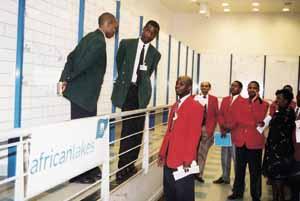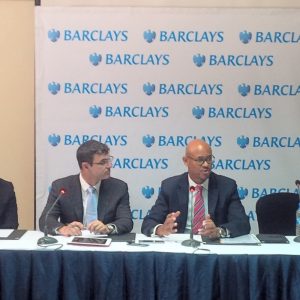On Friday, Barclays unveiled Timiza, its virtual banking strategy to extend its growth and services to the mobile space.
#TimizaKE pic.twitter.com/U45YyoSxNi
— Barclays Bank Kenya (@Barclays_Kenya) March 16, 2018
It comes after two other banks CBA (through M-Shwari) and KCB have also extended virtual services over Safaricom and M-Pesa to reach millions more digital customers and borrowers.
Who are the main players in Kenya's digital credit market? Here's our assessment https://t.co/sjYmTpf0Y7 @FSDKe @CGAP pic.twitter.com/Qa8kQiDmHg
— Edoardo Totolo (@edso) March 17, 2018
Timiza is immediately available to all M-Pesa customers (they are 27.8 million) who are either Barclays customers and non-customers. Timiza has a simple registration by dialing *848# or downloading the app from the google store and entering a national ID and phone number and within minutes of creating a new password, one can see their credit limit and start borrowing. The minimum loan amount is Kshs 50, and maximum Kshs 1 million, though it’s really up to 150,000 (~$1,500) depending on one’s credit rating and funds are immediately sent to one’s Timiza wallet (not M-pesa). For demonstration, a loan of Kshs 1,000 (~$10) for 30 days attracts a fee of 1.17% plus a facility fee of 5%, for a repayment of Kshs 1061.67
Besides being an easy and low-interest loan avenue, Timiza also offers a simple current account, savings account, fixed deposit account (term deposits of 1, 3, 6, 12 months – minimum Kshs 1,000. no top-up), group savings accounts, and channels for utility payments. One can also purchase insurance (a whole life cover policy) in the app.
A few months ago when M-Shwari was marking five years since its launch, CBA announced they would have variable pricing for good-repayers and a rebate on fees for people who paid loans within 10 days. These have not been done, but there are hints of such revisions in Timiza
Other Timiza Notes
The Timiza T&C‘s mostly relate to the use of personal information and clauses on resolving disputed. But they also have some interesting things:
- There are no fees for transfers between Timiza and M-pesa
- Barclays may suspend a Timiza account and credit if they discover it is being used for fraud or illegal activities, and they may also suspend them if they become aware that a customer is defaulting on other loans.
- Unique from M-Shwari in that the loans can be rolled-over, and there will be a “roll-over” fee levied. However, the staff at Barclays branches have no authority to alter Timiza agreements.
- Timiza users will be eligible for store finance at Barclays-selected merchants
- One can select the period for repayment of a loan when applying for a loan – maximum of 30 days
Barclays has 88 branches which are located in 38 of Kenya’s 47 counties and says they are responding to their customers preference for more mobile and internet banking channels. Barclays targets to get 5 million new customers in the next five years.
$1=Kshs 101

